This post may contain affiliate links. Please read our disclosure policy. As an Amazon Associate, I earn from qualifying purchases.
This creamy tarragon sauce is rich, silky, and full of bright flavor from fresh lemon juice and herbs. It’s a simple way to elevate chicken, fish, roasted vegetables, or even a bowl of rice.
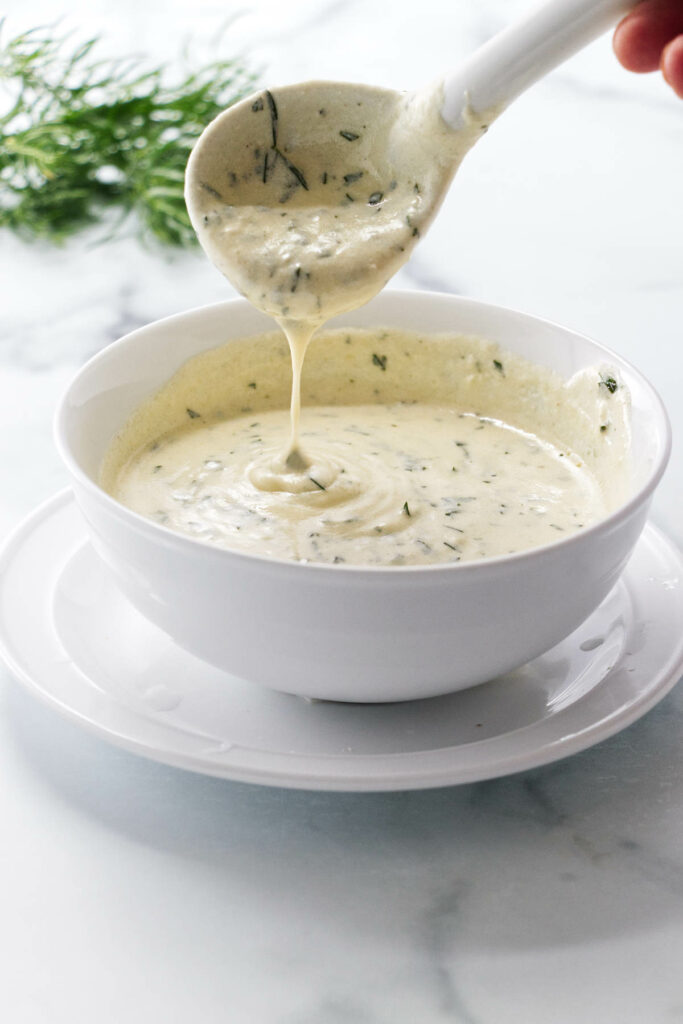
Our French lemon tarragon cream sauce is velvety smooth and aromatic. It’s particularly delicious with our Chicken Cordon Bleu with Asparagus. It is easy to make and will take your meals to the next level.
Why This Creamy Tarragon Sauce Recipe Works
- Quick and easy: You don’t need any fancy skills—just a handful of ingredients and a saucepan.
- Versatile: It pairs well with chicken, fish, rice, and even veggies.
- Fresh and zesty: Lemon and tarragon give it a fresh, vibrant taste.
- Customizable: Swap out the white wine for chicken broth or tweak the seasonings to make it your own.
If you like this recipe, try our tarragon cod or our chicken with tarragon sauce.
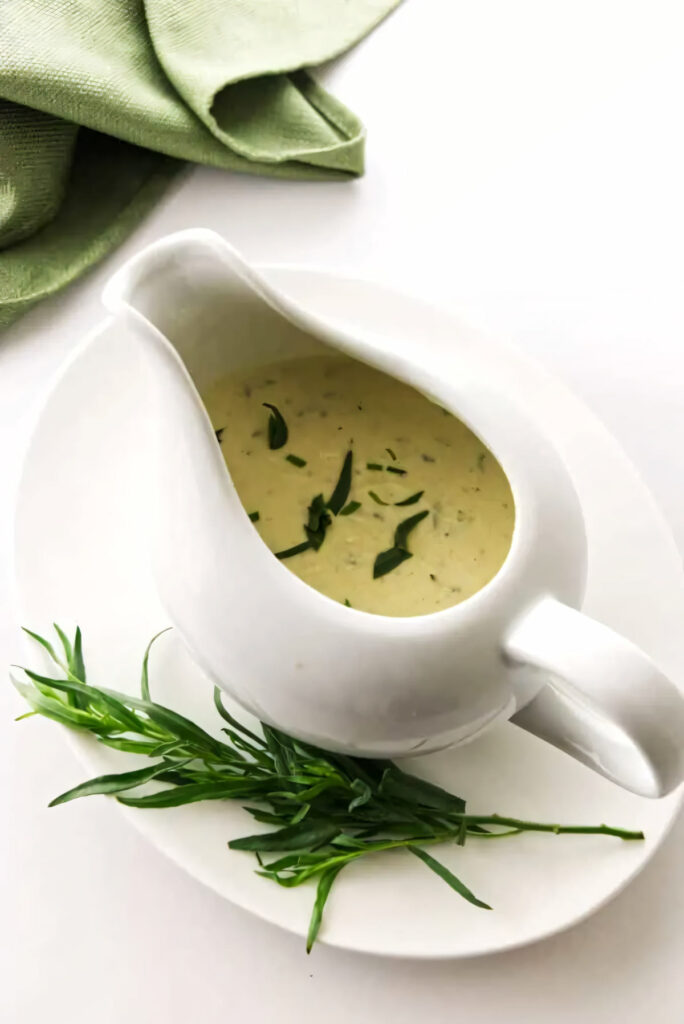
Ingredient Notes:
- When cooking with wine, choose a good dry white wine you’d actually enjoy sipping; it’ll enhance the flavors in the best way. If wine isn’t your thing, no worries! You can swap it out for extra broth.
- Use fresh tarragon. Dried tarragon will be too mild and contribute a grainy texture.
Recipe Tips
Have all your ingredients measured and ready before you turn on the heat. This sauce comes together quickly, so a little prep goes a long way.
It will thicken. If the sauce seems a bit thin at first, don’t worry, it will thicken slightly as it cools.
To keep the sauce warm, set your serving dish in a larger bowl of hot tap water. It’ll stay warm without the risk of overcooking.
Use room temperature cream. Cold cream can cause the sauce to cool down too quickly or seize slightly. If you have time, take it out of the fridge before you start.
Don’t let it boil. Once you add the cream, keep the heat low. A gentle simmer is all you need, boiling can cause the sauce to separate or turn grainy.
Reheat gently. This sauce holds up well if you make it a little in advance. Reheat it over low heat, stirring constantly. If it thickens too much in the fridge, just stir in a splash of broth as it warms up.

Substitutions and Serving Suggestions
If you’d rather skip the wine, just use an equal amount of broth—chicken or vegetable both work well.
Vegetable broth is a fine swap. We don’t recommend using water, you’ll lose a lot of flavor, and the texture won’t be quite right.
You can use freshly ground black pepper instead. It’ll add some black flecks to the sauce, but the flavor will be just as good.
This rich, creamy sauce goes with just about anything. Spoon it over steak, pan-seared fish (like our tarragon salmon), or grilled veggies. It’s also great on rice, mashed potatoes, or pasta, and makes a fantastic dip for crusty bread.
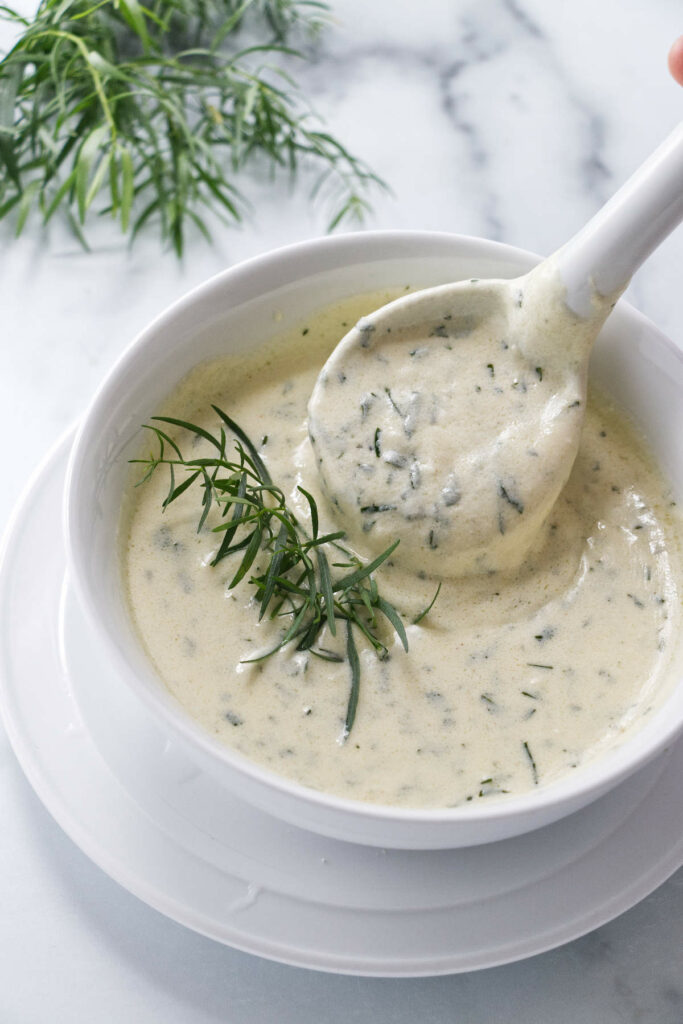
Storing Leftovers
To store leftovers, transfer it to an airtight container and refrigerate for up to 3 days. When you’re ready to use it again, reheat gently over low heat on the stovetop.
You can also store it in the freezer for up to 6 months but it will split and look watery when you thaw it.
Pin this now to find it later!
Pin It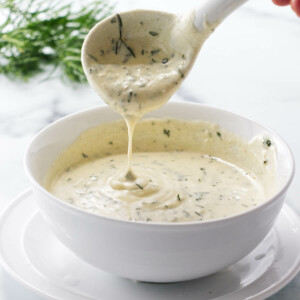
Lemon Tarragon Cream Sauce
If you make this recipe, please leave a star rating and comment.
Ingredients
- 3 tablespoons butter, divided
- 1 garlic clove, grated or minced
- ½ cup dry white wine
- ½ cup chicken broth
- 1 ½ cups heavy cream
- 1 tablespoon honey
- ¼ cup fresh lemon juice
- ½ teaspoon salt
- ¼ teaspoon ground white pepper
- 3 tablespoons chopped fresh tarragon
Instructions
- In a saucepan set over medium heat, melt 1 tablespoon of the butter and add the garlic. Cook for 30 seconds, do not brown.

- Add the wine and cook for 30 seconds to burn off the alcohol, then add the chicken broth. Increase the heat to medium-high, bring to a boil, and reduce the liquid by half, this should take about 3 to 4 minutes. Reducing first is key to preventing curdling later.
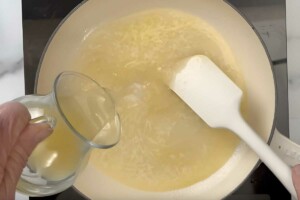
- Lower the heat to medium-low. Stir in the cream, honey, lemon juice, salt, and white pepper. Simmer gently (do not boil) for 5 to 8 minutes, or until slightly reduced and just thickened.

- Remove from the heat and stir in the remaining butter and the chopped tarragon. Transfer the sauce to a pitcher or small dish.
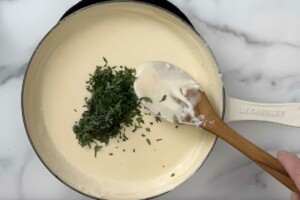
Video
Notes
Variations
Nutrition
Nutrition information is automatically calculated, so should only be used as an approximation.
 Like this recipe? Rate & comment below!
Like this recipe? Rate & comment below!The Ingredient Shot



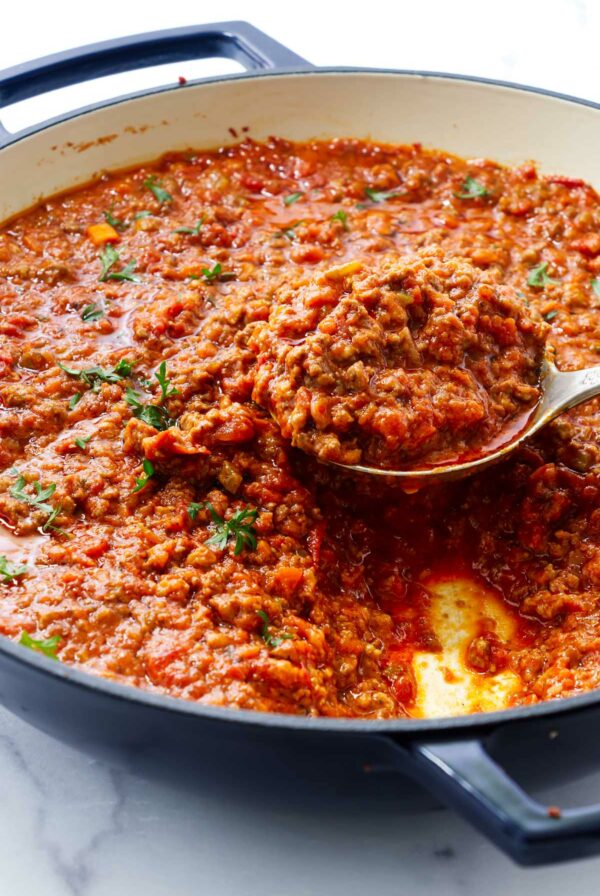












Easy to follow instructions and I even made it with 1/2 the cream. It thickened up nicely and still tasted rich and creamy.
Tanya, that is great to hear, we are so glad you enjoyed it. Thanks for the 5-star rating!
What’s with the lemon juice and cream? Of course my sauce curdled. Find another recipe folks. Rating, 0 stars
Hi there! Sorry to hear your sauce curdled. This recipe uses heavy cream, which is stable enough to handle lemon juice when added in the right order and gently simmered (not boiled). The wine and broth get reduced first, which also helps stabilize the base. If you used a lower-fat dairy or added the lemon too early, that could explain the curdling. I’ve added more tips in the notes section to help troubleshoot this going forward. Appreciate the feedback, and it looks like you might have meant to leave a different star rating?